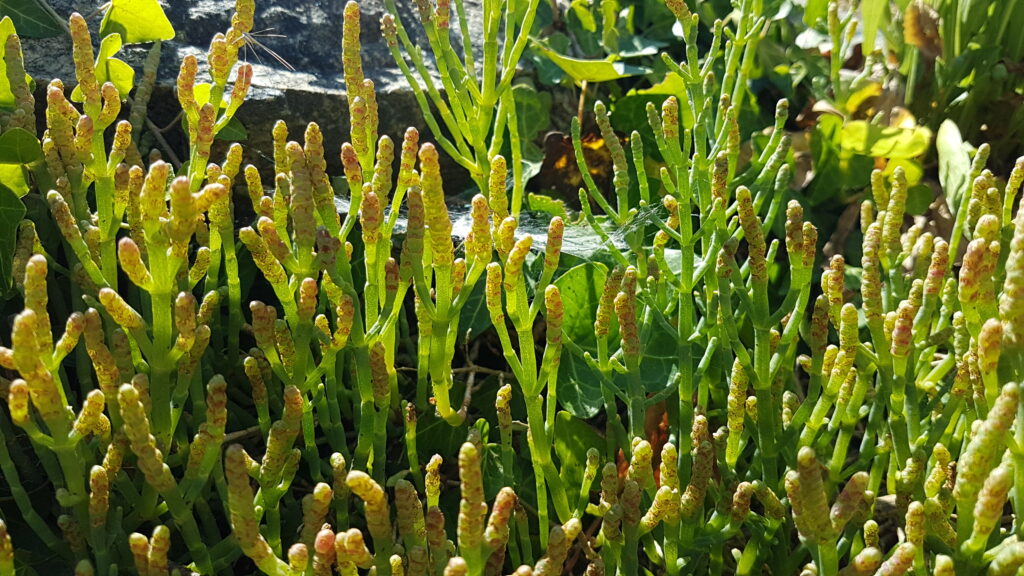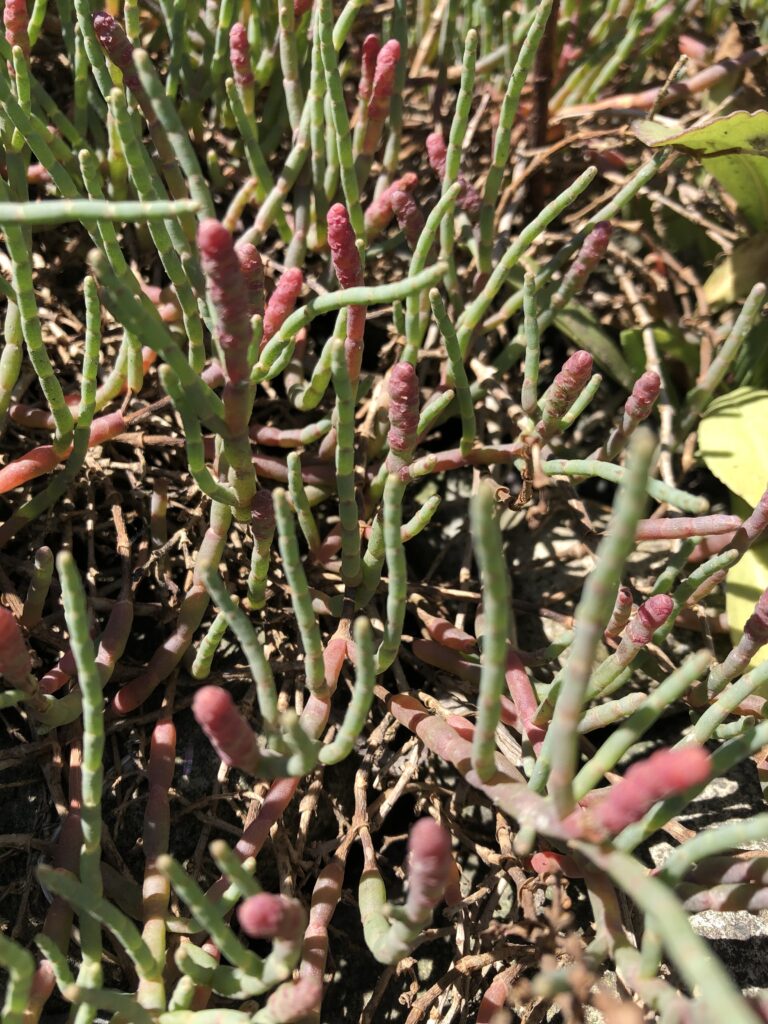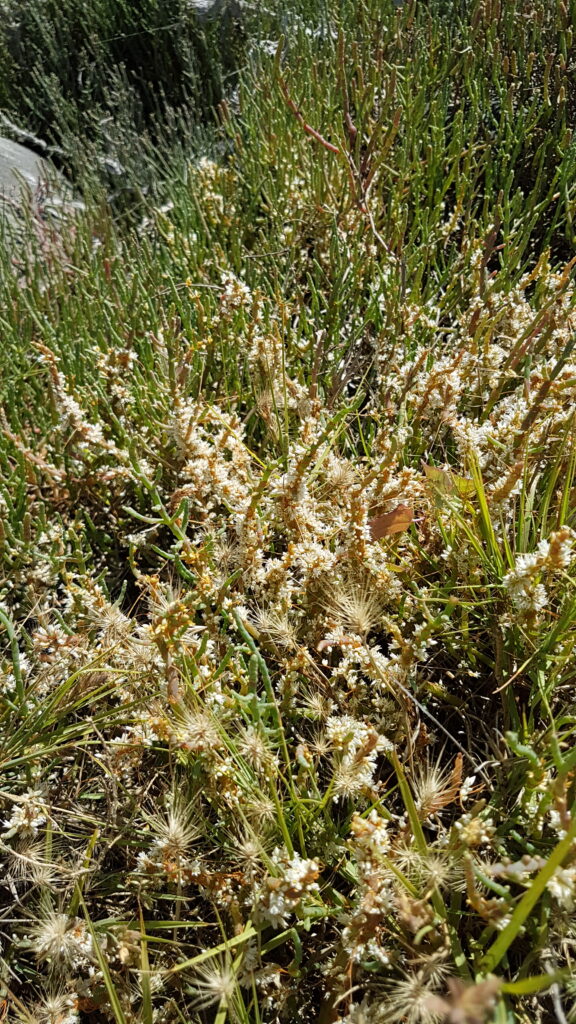Sea Asparagus (Salicornia virginica)

Sea asparagus is a salt-tolerant perennial that is native to both coasts of North America. It usually grows in salt marshes and estuaries. The stems are fleshy and jointed, with very small, scale-like leaves. The flowers are very small, and are sunken into joints in the stem so that very little of the flower is visible.

Sea asparagus has some interesting adaptations that allow it to survive in salt water. As salt water is taken in by sea asparagus, the salt is removed from the water and stored in specialized compartments, called vacuoles, at the ends of stems. Once the vacuoles are filled, the stem segment turns red and falls off. This allows the plant to remove excess salt from its body.

Sea asparagus is edible, and is sometimes sold in stores and restaurants. It has a salty taste, and can be eaten fresh, cooked, or pickled. In the past, ashes from dried and burned sea asparagus were used in soap and glass-making, which gave the plant the common name “glasswort”.
For more information, visit E-Flora BC or the Biodiversity of the Central Coast website.


